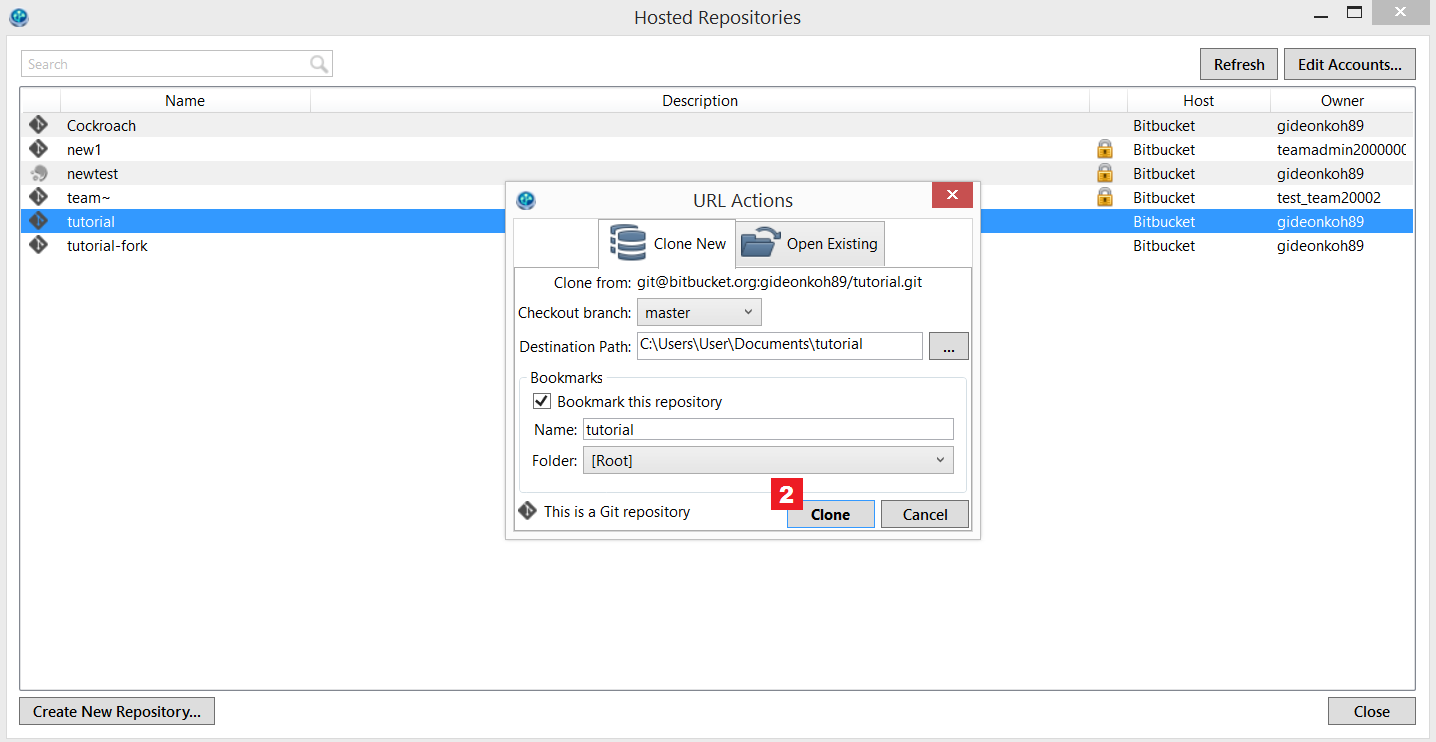

With such URLs, the token should be used as the user password. Found this answer: Sourcetree remote: Invalid username or password. If you include a username into the URL, OAuth will not work because the token will be overwritten. Here is the way the same situation looks in the SourceTree application: Then you enter your account name and password. Thus the repository URL should not include username prefix. When you specify token as your user name, the OAuth mechanism is used to authenticate, and the token is used as a username in the URL. For more details refer to GitHub 2FA help Command line git does not support 2-factor authentication, thus it is required to use access token instead. In the left sidebar, click Personal access tokens. In the left sidebar, click Developer settings. The command line is used to clone, pull and push. In the upper-right corner of any page, click your profile photo, then click Settings. JetBrains IDE's git integration relies on command line git client. Select which scopes you wish to grant this token. navigating to C:UsersUSERNAMEAppDataLocalAtlassianSourceTree and removing (or renaming) the passwd file.


Although my GitHub credentials are saved in the SourceTree authentication settings, whenever I try to push to or pull from a GitHub repository, a 'GitHub Login' window appears and asks me to enter my username and password. The steps to do this are as follows: Go to your Personal Access Tokens settings in GitHub. Recently, SourceTree will not authenticate correctly with GitHub. Go to Tools -> Options in SourceTree and then go to the Authentication tab on the Options popup. your username as login and token instead of your password. To work with GitHub's two-factor authentication in SourceTree you can simply use your access token instead of your password. If you use such URL, you need to use "Login - Token" pair, i.e. Found this answer: Sourcetree remote: Invalid username or password. NB: You can't use "Token - empty password" pair if you specify a username in a remote's URL (e.g. When prompted for credentials, either enter token as username and leave the password field empty or use the token instead of your password.įor GitHub, you can pre-configure the token to be used. If you use HTTPs access, after 2-factor authentication is enabled you will need to configure an Access token (BitBucket calls it app password) and use it to authenticate. If you use SSH to access your repositories, nothing changes after enabling 2FA.
#SOURCETREE GITHUB AUTHENTICATION FAILED HOW TO#
How to access repositories from IDE after enabling 2FA In first instance, an attempt to text copy the personal token from Gitlab to Sourcetree proved impossible to accomplished. GitHub and BitBucket, offer 2-factor authentication to improve protection of user accounts. However, enabling 2FA complicates cloning, pulling and pushing to repositories of the account, if they are accessed over HTTPs.įor public repositories, authentication is required to push to them, while cloning and pulling should work without authentication.įor private repositories, cloning, pulling and pushing require authentication. One of the potential reasons for this issue is that there are put away qualifications in your git. I have done this earlier with spring security xml config but couldn't figure out with java config as adding antmatchers doesn't help.Public Git repository providers, e.g. Now lets see the authentication failed error as follows. I want to exclude some URL patterns from authentication(eg: static resources etc.). Do not forget to press enter once the command has been inputted. I have spring web application with Spring security configured using java config approach. Following is express solution for authentication failed for git repository clone.


 0 kommentar(er)
0 kommentar(er)
